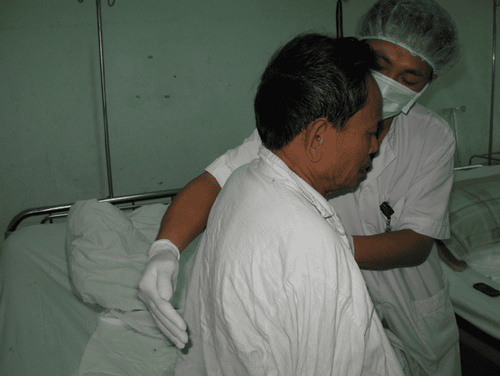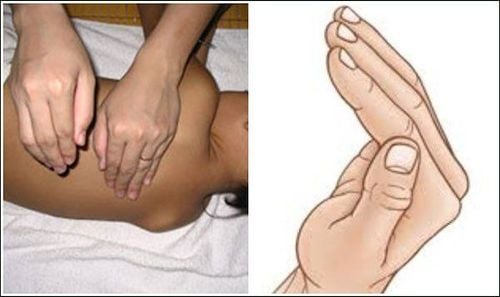This is an automatically translated article.
Thoracic pulsation is a technique performed on patients with respiratory diseases, to help loosen phlegm, thereby eliminating waste products from the body.
1. Indications and contraindications of thoracic vibrating technique
1.1. Indications for thoracic defibrillation Thoracic pulsation technique is indicated for patients with bronchiectasis, cystic fibrosis, increased secretion of phlegm, pneumonia, atelectasis due to sputum stagnation, bronchitis, bronchial asthma ... People lying in one place for a long time. Fluid obstruction during coma. A few cases after surgery. 1.2. Contraindications thoracic defibrillator thoracic fibrillation is not indicated for the following cases:
There is a risk of bleeding. People with thoracic injuries that have not yet been treated. People who are severely depleted.

Kỹ thuật vỗ rung lồng ngực chỉ định cho những bệnh nhân viêm phế quản, hen phế quản...
2. Prepare before beating the chest
To perform effective thoracic flap technique, it is necessary to prepare enough people, tools and chemicals.
2.1. Performer A qualified physiotherapist or technician.
2.2. Tools, chemicals Vacuum cleaner. Bean tray. Tissue. Tissue. Blood pressure monitor, stethoscope. Heel pillow, mask. X-ray film, X-ray film reading lamp. 2.3. Patients Patients need to be measured vital indicators such as pulse rate, breathing rate, blood pressure, temperature... Identify areas of stagnant secretions. Pay attention if the patient has catheters or leads. Wear loose or loose clothing. Before the procedure, do not let the patient eat full. 2.4. Prepare medical records. The technician needs to know the cause, history, disease progression and doctor's diagnosis. Read X-ray results. Know the indications and contraindications. Know the areas to focus on patting and vibrating.
3. Chest vibration technique
3.1. Chest flap technique Instruct the patient in a comfortable lying or sitting position. The technician clasps his hands together and pats the patient's chest wall. The tapping force is just right, not too strong and not too light. When flapping, an air cushion is created between the patient's hand and chest. Technicians must always keep shoulders, elbows, and arms in a comfortable position, without tendons. During clapping, the clapping hand may move up or down or around in a circular fashion so that the patient can clear the phlegm. Be careful not to hit the protruding bones such as the spine, collarbone, shoulder blade. A thin towel must be placed on the patting area to reduce friction and relieve pain. Chest patting time is about 3-5 minutes. Then secretions will be secreted. 3.2. Thoracic Vibration Technique The technician places his hands on the chest wall behind the patient's back, and places his fingers on the patient's ribs. The technician presses and vibrates gently and quickly against the chest wall to allow the secretions to drain out. This movement is performed while the patient is in the exhalation phase. During the performance of the technique, the patient must inhale deeply, exhale forcefully and long. The process of thoracic vibration is done for about 3 - 5 minutes.

Quá trình vỗ rung lồng ngực được thực hiện trong thời gian khoảng từ 3 - 5 phút
4. Complications and how to handle them
During thoracic pulsation, there may be some complications as follows:
Fatigue, shortness of breath, pale skin, unstable blood pressure. Appears some thoracic injuries such as skin, ribs ... due to flapping technique, wrong vibration, too strong patting. With the above complications, it is necessary to have appropriate treatment according to each complication:
When the patient appears to have difficulty breathing, the technique must be stopped immediately and reported to the doctor for timely treatment. Understand the contraindications when ordering the technique. Above is the knowledge about chest vibrating for patients. This is a technique that should be performed by a specialist on patients with respiratory diseases, helping to loosen phlegm to eliminate waste products from the body.
Please dial HOTLINE for more information or register for an appointment HERE. Download MyVinmec app to make appointments faster and to manage your bookings easily.













